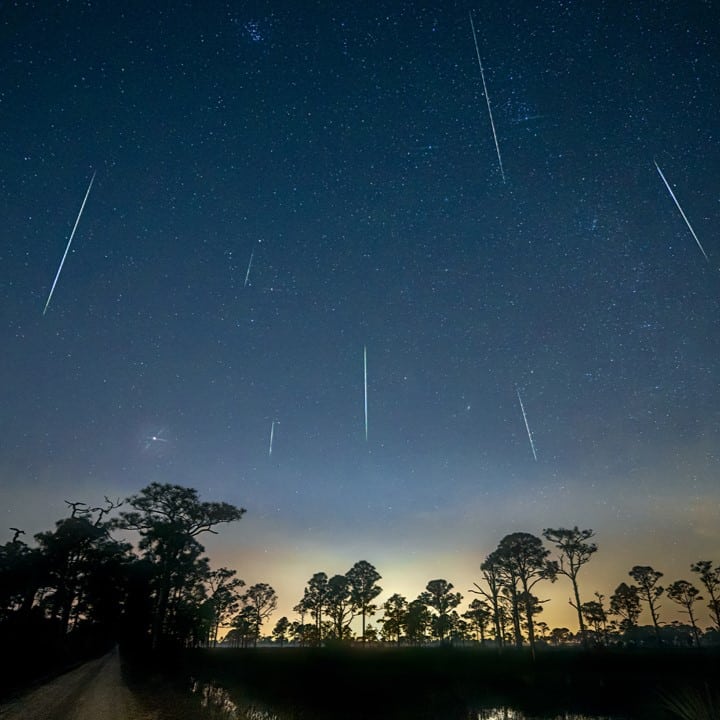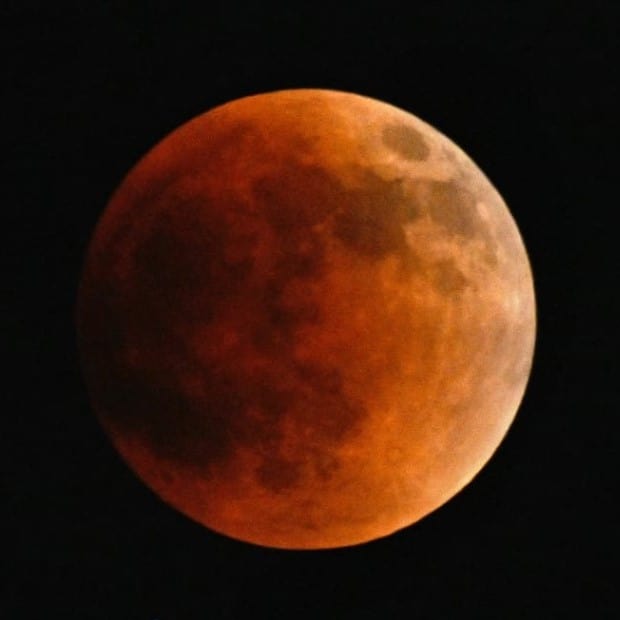- Overview
- Trip Outline
- Gallery
- FAQ
- Dates & Pricing
- Gear List
Solar and lunar eclipses, meteor showers and more…
Duration: 2hrs
When booking a Cosmic tour, please be mindful of the weather! Especially rain and cloud cover; or we won't see the night sky!
Numerous times annually, the night sky is illuminated by countless celestial fireballs. Although commonly referred to as shooting stars, they have no connection to actual stars. These minute space particles are meteoroids, essentially cosmic debris.
Cosmic tour locations
Mt Eden
Viewing a Meteor Shower
Meteor viewing is optimal at night, though meteoroids can enter Earth's atmosphere any time. To maximize visibility, observe away from city lights.
Prominent Meteor Showers
While meteors can occur at any time of the year, some meteor showers occur at the same time every year. Some of the more famous meteor showers have been observed by humans for hundreds and thousands of years.
Choose some dates
We have Yearly Meteor Showers with up to 150 meteors per hour:
Quadrantids January
Lyrids April
Eta Aquarids May
Perseids August
Draconids October
Orionids October
Leonids November
Geminids December
Ursids December
We also have some Solar and Lunar Eclipses to see:
Total Lunar Eclipse
Partial Solar Eclipse
Penumbral Lunar Eclipse
Partial Solar Eclipse
Try our Night SuP Auckland adventure
Asterisms ⁂
An asterism ⁂ is a configuration of stars that does not qualify as a distinct constellation. In contrast, a constellation refers to a specific arrangement of stars in the night sky, with the term originating from the Latin word constellacio, meaning a group of stars. Most asterisms ⁂ are relatively recent in their identification. They can be small patterns found within a constellation or large formations composed of prominent stars from multiple constellations.
One widely recognized asterism ⁂ is The Plough (also known as the Big Dipper), which consists of seven stars within the constellation Ursa Major (the Great Bear). It holds tremendous popularity not only because it serves as a navigational guide to other stars and constellations but also due to its distinctiveness. Despite being comprised of the brightest stars in the Ursa Major constellation, the Big Dipper itself is not considered a constellation but rather an asterism.
This implies that an asterism ⁂ can encompass any loosely connected arrangement of stars that collectively form a recognizable picture, figure, or representation. There is no official designation for an asterism ⁂, but many of them have gained significant familiarity. Typically, an asterism ⁂ exhibits a straightforward pattern that is easily identifiable.
Cosmic Experiences: Unveiling the Lunar and Solar Eclipses
Cosmic experiences open a gateway to the wonders of the universe, offering unique benefits and captivating features. By delving into the realms of lunar and solar eclipses, we will explore the transformative potential of these celestial phenomena and unravel the magic of these cosmic events.
Heightened Awareness and Perspective:
Cosmic experiences, including lunar and solar eclipses, bring about a heightened sense of awareness and expanded perspective. Witnessing the celestial dance of the moon and sun instills awe, reminding us of the vastness and interconnectedness of the universe. Lunar eclipses, with their serene beauty and ethereal glow, encourage introspection and self-reflection. Solar eclipses, with their awe-inspiring spectacle, remind us of the grandeur of nature and our place within it. These cosmic events serve as potent reminders of the infinite possibilities and mysteries that exist beyond our earthly realm.
Spiritual Awakening and Transformation:
Cosmic experiences, especially during lunar and solar eclipses, can act as catalysts for spiritual awakening and transformation. The profound energy and symbolism associated with these events have long been revered by various cultures and spiritual traditions. Lunar eclipses, with their association with the lunar feminine energy, facilitate emotional healing, intuition, and inner transformation. Solar eclipses, with their symbolic representation of new beginnings, inspire personal growth, manifestation, and spiritual alignment. These cosmic events provide seekers with an opportunity to deepen their spiritual practices, connect with higher realms, and embark on a path of self-realization.
Celestial Connection and Unity:
Cosmic experiences, marked by lunar and solar eclipses, foster a profound sense of connection and unity with the universe. They remind us that we are part of something greater, transcending boundaries of time and space. Lunar eclipses, also known as "blood moons" or "lunar transformations," symbolize collective shifts and cosmic rebirth. Solar eclipses, known as "celestial alignments" or "solar revelations," bring communities together in shared awe and wonder. These celestial events offer opportunities for group gatherings, meditation, and ritual, creating a sense of unity and shared connection with the cosmos.
Natural Wonder and Scientific Exploration:
Cosmic experiences, encompassing lunar and solar eclipses, ignite curiosity and encourage scientific exploration. These events provide scientists and astronomers with invaluable opportunities to study celestial mechanics, gather data, and deepen our understanding of the universe. Lunar eclipses, with their visual spectacle of the moon passing through Earth's shadow, reveal the beauty and complexity of celestial orbits. Solar eclipses, with their precise alignments and rare occurrences, captivate scientists and enthusiasts, facilitating research on the sun's corona, solar flares, and atmospheric changes. These cosmic events serve as reminders of the intricate laws of nature and the wonders waiting to be discovered.
Cosmic experiences, encompassing lunar and solar eclipses, offer seekers a profound journey of heightened awareness, spiritual awakening, celestial connection, and scientific wonder. Through these events, individuals can tap into the transformative power of the cosmos, expanding their perspectives and deepening their understanding of the mysteries and beauty that lie beyond our earthly realm.
Check out our booking tab, click the book now button or fill an enquiry here
Duration: 2hrs
Itineraries
Mt Eden

A meteor shower occurs when several meteors, commonly known as shooting stars, streak across the night sky, appearing to originate from a single point.
Meteoroids, originating from comets or asteroids, create meteors or shooting stars upon entering Earth's atmosphere. Friction with atmospheric gases heats them, causing a glowing streak. These brief flashes result from burning hot air or material in the meteoroid's wake. If a meteoroid survives and lands on Earth, it becomes a meteorite.
Meteor showers occur periodically as meteoroids travel parallel paths at the same speed, creating the illusion of originating from a single point in the sky, known as the radiant, when observed from Earth. These events are typically named after the corresponding constellation, especially in regular patterns.
Because the latest the sun goes down in New Zealand is 20:30, and meteor showers are best viewed closer to midnight due to the angle in which they shoot realtive to earths rotation!
ALL THE TIME! As long as the weather is on our side.
Clothing
- Merino/Thermal Shirt
- Fleece/insulation layer
- Down Jacket
- Neck warmer / scarf
- Beanie
Equipment
- Personal medication
- Water bottle
Guided tour includes
Hot drinks
Dessert / pastries
Tour Excludes
Transport / Taxi - all can be arranged



